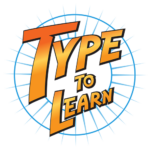Dysgraphia is a neurodevelopmental learning disability that impairs a person’s ability to produce written language. It is usually first evident in preschool or early elementary school and continues even into adulthood. It entails both physical/motor and mental/cognitive challenges. Early on, it manifests as a writing and penmanship problem, while later on it may additionally impact written expression. At all ages, dysgraphia causes writing to require more time and conscious effort than the typical student.
Initially, children with dysgraphia experience difficulties with the physical or fine motor aspects of writing. Preschoolers have trouble holding a crayon or marker and tracing letters. They often avoid fine motor activities like coloring and cutting with scissors, and are sometimes late to learn other fine motor tasks such as tying their shoes.
Signs an Elementary Student May Be Experiencing Dysgraphia
If an elementary student that is struggling with their writing demonstrates some of the following behaviors, it could indicate they are experiencing dysgraphia:
- Awkwardly gripping their pencil, such as making a fist around it
- Writing poorly formed or sloppy letters
- Mixing lowercase and uppercase letters when writing
- Having difficulty with proper letter spacing
- Writing letters from the bottom up
- Applying too much or too little pressure with their writing utensil
- Often complaining that writing hurts their hand
In mid-elementary school, students with dysgraphia usually begin demonstrating the mental or cognitive aspects of dysgraphia as well. They often struggle to retain the spelling of even simple words even though they may speak well and have a good vocabulary. They typically write slowly, making it difficult for them to complete written assignments in a timely manner. These students are often inattentive to writing conventions like capitalization and punctuation. When presented with open-ended writing assignments, they tend to stare at their paper, struggling to figure out what to write.
By middle school or high school, the mental/cognitive challenges emerge and become more prominent. Adolescents with dysgraphia usually have trouble with the writing process. Thinking and writing at the same time becomes very challenging for them, making it hard to express their thoughts in written form. They have difficulty generating ideas and very commonly have trouble starting a writing assignment. Even when they have an idea, they can struggle to transfer that thought from their brain onto paper. The result is that they produce minimal work, such as only a couple sentences compared to their classmates who write a couple paragraphs in the same amount of time. These students have difficulty with written sentence structure and grammar and generally speak much better than they write.
How Typing Can Help Treat Dysgraphia
When considering the treatment of dysgraphia, advice to simply “practice more” is generally not effective for improving penmanship (and can feel quite torturous to a person with dysgraphia). There are various writing accommodations and tools that can be used at school or work, but of them, learning to type on a keyboard is perhaps the most vital. It is highly recommended that students with dysgraphia learn to type earlier in their education rather than later. It’s much easier to learn how to type correctly the first time than to go back and correct bad habits later.
Typing helps with numerous aspects of writing: legibility, spelling, grammar, and organization. Typed text is neat and consistent, creating readable results, which is much preferred over sloppy handwriting. When typing, there is generally access to spelling and grammar checking tools, which help support the mechanical challenges of people with dysgraphia. Typed work can easily be moved around and quickly edited, which facilitates organization of thoughts. But perhaps most importantly, typing positively affects the flow of thought. The majority of students with dysgraphia find it easier to simultaneously think and type on a keyboard when compared to writing by hand. With a keyboard, there is less focus on the act of writing, allowing them to more fluidly access their thoughts and express their ideas. All of these benefits work together to develop a stronger writing efficiency, allowing writing tasks to be completed quicker and with less physical or mental strain.
The Importance of Learning Proper Typing Technique
Given that many students with dysgraphia have underlying fine motor difficulties, learning to type can require great effort. However, once touch typing is learned, it can be life-changing. Consequently, using the appropriate instructional approach is essential. Students with dysgraphia need to learn to touch type using proper technique. They need individualized instruction that occurs in small sequential steps and progresses down a logical skill pathway. They need opportunities for review and practice, along with remediation of errors in real time as the mistakes occur. And, of course, typing lessons need to be enjoyable and promote success in order to keep students motivated.
Ultimately, writing is an important life-long skill. People with dysgraphia struggle with writing by hand and need an alternative option to help with communicating. For them, learning to type is essential because it supports their learning challenges and helps them more effectively and efficiently engage in written communication.
Additional Resources:
Article by Jennifer Bennett, MS
Licensed Psychologist, Owner of BrainWorks.





